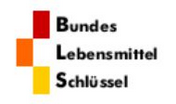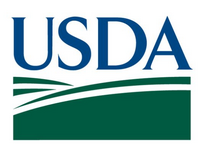SpecPDM currently contains 4 food databases that are regularly updated.
•BLS: German food composition databank
•CIQUAL: French food composition databank
•USDA: American food composition databank
•CoFID: Food composition databank for the United Kingdom
The databases in summary
1)The BLS (Bundeslebensmittelschlüssel) is a German nutritional value table that regularly surveys nutritional averages of more than 15,000 foods available on the German market (bls.de). Though much of the information is updated via literature of German Federal Research Centers and universities, the values are also incorporated by data from food producing firms and national/international partners. The database is organized in a hierarchical structure which combines foods containing like values into food groups. The online database can be accessed through a user account and password upon request.
For more information regarding the BLS, please refer to the official website.
2)The CIQUAL is a French database run by ANSES, which is the French agency for food, environmental, and occupational health safety. A collaboration of national research institutes supplies the data used in the table about the average nutritional values of food products produced and consumed in France. According to the website, each component is explained through an average value, a minimum and a maximum, and a confidence code (A=very reliable, D=less reliable); it is also possible to view information based on a specific component such as how rich a food is in a vitamin. All this information can be accessed online free of charge.
For more information regarding the CIQUAL, please visit the official website.
3)The USDA refers to the U.S. Department of Agriculture, and more specifically, the FoodData Central database that the department is responsible for. The database's system contains five integrated types of data that are characterized by their unique purposes. These are Foundation Foods, a comprehensive explanation of the foods involving nutrient composition, agricultural information, etc.; Experimental Foods, the agricultural data regarding foods that were produced in experimental conditions and are not sold commercially; Standard Reference, the primary food composition data bank that has been used for decades; Food and Nutrient Database for Dietary Studies, the food data primarily focused on dietary intake and practice; and the USDA Global Branded Food Products Database,a public-private partnership that shares information on branded and private label foods. The datasets can be accessed online via a search on the website, or through a download of the selected data types.
For more information regarding the USDA, please refer to the official website.
4)The CoFID is the UK food composition database that is regularly updated by Public Health England. It exists to analyze the nutrients associated with foods commonly consumed in the UK, and brings the data together in a consolidated dataset. Much of the data is based on composite studies conducted by research organizations, but some information also comes from published literature. Previously only available as an Excel download, the CoFID can now be accessed and searched online.
For more information regarding the CoFID, please visit the official website.
The article that follows will explain how to use these databases in PDM.



